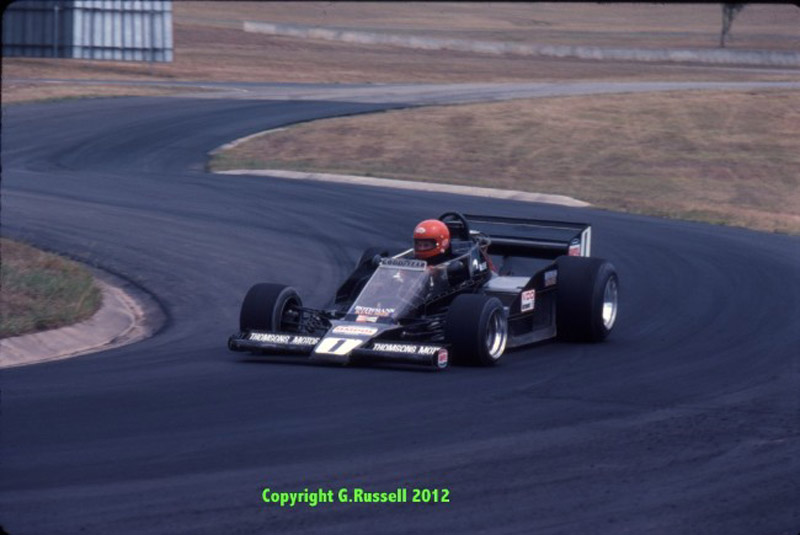-
Administrator


McRae did little racing in 1975, and 1976. He entered three rounds of the 1975 US F5000 Championship, driving a Lola T332, and sat out the 1976 New Zealand International Series, with the Tasman Series having been scrapped. He entered the opening two rounds of the 1976 US F5000 Championship in a Lola, but started neither. However, in the final round at Riverside, he appeared with a brand new car, the McRae GM3.
The new GM3 was an impressive looking race car, and in some contrast to the largely Lola dominated grids. It featured quite defined edges, very low side-pods, and hip-mounted radiators, but its most notable featured was a clear Perspex upper body cowl, which allowed spectators to see McRae at work. At Riverside, the new car qualified 22nd, and finished Heat 2 in sixth place.
Unfortunately, however, just as the new GM3 arrived on the scene, the category in which it was created for, was about to dissolve. That Riverside event was to be the last time Formula 5000 was held in the US as a national championship. Its creators, the Sports Car Club of America, were all at sea by the mid-1970s, and desperately looking for ways to try and rekindle some of the magic they’d enjoyed during the late 1960s and early ‘70s, when they controlled not only a thriving F5000 Championship, but also the Can-Am Group 7 Sports Car Championship, and the Trans-Am Sedan Championship. But the Can-Am ended in 1974, amidst anaemic grids and dreary racing, while over in the Trans-Am, all the manufacturers departed, taking their millions with them, leaving the largely cash-strapped independents to keep the series alive. Furthermore, John Bishop, formerly of the SCCA and the main driving force in the creation of the Trans-Am and Can-Am, quit the SCCA, and started his own professional racing sanction, called the International Motor Sports Association (IMSA) which quickly rose to prominence.
For 1977, the SCCA decided, despite F5000 being in good health, they would try and inject some of the old Can-Am Sports Car magic back into their ranks, and enforced radical new changes, requiring all cars be fitted with a Sports Car body. Essentially, the new-look Can-Am was a sort of middle ground between the old original series that took place from 1966 – 1974, and F5000, as the cars were still limited to 5 litre stock block motors, and a single, central seat.
To suit the new 1977 rules, McRae grafted a quite unattractive looking body over his GM3 chassis, that did just enough to cover the wheels. It incorporated a front wing mounted above the bodywork, a narrow rear wing, and retained the interesting clear Perspex cockpit cover. With little funding, McRae missed the first four rounds, appearing for the first time at Mid Ohio, where he qualified 13th but failed to finish. His next outing was at the final event of the season, at Riverside, where he qualified 11th and finished an encouraging sixth.
 Posting Permissions
Posting Permissions
- You may not post new threads
- You may not post replies
- You may not post attachments
- You may not edit your posts
-
Forum Rules






 Reply With Quote
Reply With Quote